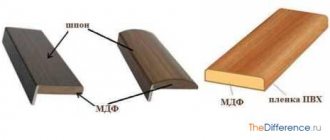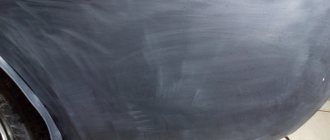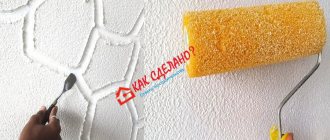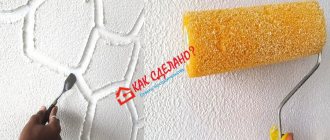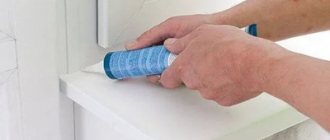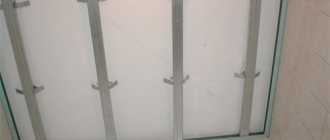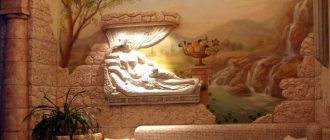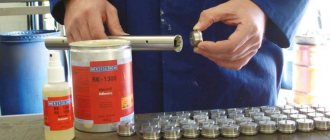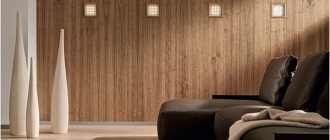Thanks to the constant development of new technologies, more and more new materials are appearing on the market that can replace classic mirrors in interior design. Mirror polymers based on acrylic, polystyrene, and polyvinyl chloride are widely used. These materials are used for decorating residential and office premises, exhibition halls, shop windows, interiors of bars, clubs, decorating columns, ceilings, as well as for making plaques and signs.
General information about mirror plexiglass
One of the most common materials for the production of polymer mirror coatings is acrylic plastic (polymethyl methacrylate PMMA, plexiglass, plexiglass). Based on the production method, extrusion and cast plexiglass are distinguished.
In terms of their technical characteristics, they are almost identical. They have high impact resistance, heat and moisture resistance. Plexiglas is 5-6 times stronger than ordinary glass. A significant advantage of mirror acrylic plastic is that they are little susceptible to ultraviolet radiation.
The disadvantages of plexiglass include its insufficient resistance to surface damage.
Acrylic is one of the most transparent polymer materials.
Applying a mirror coating to plastic is done in the same way as the classic one. Amalgam is applied to one side, the opposite side is the working side and is protected by the entire thickness of plexiglass. In addition, the working side is additionally covered with a protective film, and the reverse side is covered with a paint coating. The resulting mirror acrylic has a high specularity of 98%.
The density of mirror acrylic glass is about 1.2 g/cm³. Conventional equipment is suitable for processing it, but to obtain smooth cutting surfaces, it must be high-speed.
Compared to metals, plastics have less stability of shape and degree of thermal conductivity, therefore, in order to prevent possible overheating, softening and deformation of the material at the cut surface, cooling must be applied during processing.
Mirror plastic is actively used in the interior, in the production of built-in wardrobes, road signal and advertising signs, and in the production of outdoor advertising. The glossy surface of plexiglass is perfect for applying self-adhesive films and paints for working on plexiglass.
Acrylic mirror or, as it is also called, mirror acrylic, is very light and durable, not afraid of moisture, easy to process, and is widely used in interior decoration. Plastic mirror panels are especially useful for walls in places where the use of an ordinary mirror is associated with increased danger.
Temperature fluctuations cause different degrees of compression of each layer of acrylic plastic mirror, so it is practically not used for outdoor work.
Mirror tiles, the plastic of which does not have sufficient flexibility, are practically not suitable for molding.
Mirror acrylic plastics are produced in sheets with a maximum size of 3050x2050, thickness 2 or 3 mm, both with and without adhesive. The adhesive used for installation must be solvent-free.
Installation features
In general, work on finishing floors with such materials does not cause any difficulties and there is no point in describing the entire process in detail - the technology is very simple
However, there are points that you should definitely pay attention to, since the final result can greatly depend on this
Rolled plastic must be kept unrolled for at least a day before gluing it onto any surface. This will allow it to smooth out and become even. At the same time, you should not press it for better leveling - scratches or dents may appear, which will then not be removed.
All types of mirror tiles are coated on the outside with a special film that protects the surface from damage. If possible, do not remove it until the installation process is completed. This will ensure your parts are protected from accidental scratches.
Polystyrene as the basis of mirror plastic
One of the most popular materials as a basis for creating sheet mirror plastic is impact-resistant polystyrene. This is a composite material - a copolymer of polystyrene and rubber. The presence of rubber reduces the likelihood of microcracks forming under impact loading, which significantly increases the strength of the material.
The mirror coating on plastic is a mirror film of aluminum-coated polyester, which is glued to a sheet of polystyrene. Polystyrene does not have a sufficient degree of transparency, so a mirror film is applied to one side of an opaque sheet, most often black or white. This outer side is the working side – mirrored. It is covered with a special protective film, but when working with such material you need to be careful.
Mirror panels made of polystyrene have high impact resistance and cut resistance. The material is durable, flexible, perfectly imitates a mirror surface, and is highly resistant to chemicals. It can be used up to +70°C without loss of physical properties.
Mirror polystyrene is quite easy to process. However, it must be taken into account that the place of contact between the sheet and the mirror film is the most vulnerable. To avoid delamination, some rules should be followed during processing:
- cutting and drilling is best done with special high-speed tools, from the side of the mirror coating. If cutting is done using laser equipment, then this must be done from the reverse side;
- before starting sawing, it is better to remove the protective film from the cutting site;
- It is not recommended to use milling tools;
- The non-mirror side of the polystyrene sheet can be glued to other cleaned surfaces using special glue for polystyrene (neoprene-based or water-soluble adhesives). Double-sided tape is not suitable for this material;
- the mirror side is suitable for printing with two-component ink suitable for printing on polyester;
- Forming mirrored polystyrene sheets is not recommended.
To avoid delamination, the ends of the sheets must be protected from water. Therefore, it is recommended to use it for interior decoration.
You can care for the mirror surface using an acrylic antistatic glass cleaner. The product should be applied to the sponge, not to the coating itself.
It is used to create a wide range of advertising products, for decorative interior design, theater scenery, plaques, and signs.
Polystyrene mirror sheets are usually produced in thicknesses from 1.0 to 3.0 mm. With greater thickness, polystyrene sheets will be stiffer, lose flexibility, and become more brittle.
Video: “What does mirrored plexiglass look like?”
Methods for attaching acrylic material
There are three main ways to attach material.
Liquid Nails
In this method, it is important that the base is level. It needs to be cleaned of dust and hardware. Before installing the sheet, it must be degreased using an alcohol base . Liquid nails are distributed pointwise over the entire surface. For the purpose of fastening, the prepared decorative element is applied to the base and lightly pressed against the base.
When using this method on an uneven surface, the mirror surface may be deformed, which cannot be corrected. If the differences are insignificant, a sheet 3 mm thick is taken. It is quite dense and not too elastic, so small errors will not spoil the surface.
U-shaped fastenings
U-shaped fasteners can be used as a fastener if you need to create mirrored arched and window openings on a solid surface. This method can be used to finish fences. The decor is attached to the concrete base using dowels, and to the wooden base - with self-tapping screws .
It is recommended to frame polymer elements around the perimeter to prevent surface deformation due to external factors.
Hidden fixation
If you need to create a monolithic surface or invisible joining of several sheets, you can use special plates called hidden fasteners . Their advantage is that the fastening is truly invisible, so it will not spoil the finished product.
Mirror plastic is a material with high quality characteristics that provides unlimited possibilities for design, repair, and construction. Its correct selection and fastening will allow even the most daring ideas to come true.
PVC panels with mirror effect
Mirror plastic based on polyvinyl chloride (PVC) is today one of the most widely used polymer materials used in interior decoration, the manufacture of plaques and signs. Thanks to the perfectly smooth surface, a mirror film is applied to the PVC sheet, which is the working surface. A layer of protective varnish is applied on top.
The features of this plastic include the following qualities:
- impact resistance and moisture resistance. It practically does not absorb water and moisture from the air. It is able to withstand even direct contact with water, does not swell, does not deform, which allows the use of PVC-based mirror plastic in bathrooms and kitchens.
- PVC plastics are resistant to a large number of chemicals, solutions of acids and alkalis, and household chemicals. They have increased fire safety.
- The material can be easily processed with conventional tools. It can be drilled, sawed, bent, milled, and secured with screws.
- PVC-based plastics have high elasticity, which makes it possible to manufacture products of complex shapes from them.
- They are well glued using solvents and special compounds, welded in a heated state using hand-held hair dryers or end-to-end on special machines.
- PVC plastic does not contain heavy metals, is environmentally friendly and has no harmful effects on the human body and the environment. The absence of pores on the surface of the panels does not allow pathogens to accumulate.
- They are easy to clean using detergents that do not contain chlorine.
Mirror PVC plastic is available in the form:
- PVC ceiling panels, painted silver or gold and varnished. On the reverse side, under the protective film, a sticky layer has already been applied. If there is no self-adhesive layer, then a PVA-based composition is used for installation. When installing a ceiling made of PVC panels, it should be taken into account that high-power lighting lamps cannot be used, since it is not recommended to heat the plastic too much;
- self-adhesive PVC panels. This is a rolled material with a pre-applied layer of glue. Can be used on any prepared surface;
- PVC mirror film for suspended ceilings. Mirrored stretch ceilings based on this film have excellent performance qualities: high moisture resistance, fire resistance, and dust repellency. Caring for mirrored ceilings made of plastic comes down to regular periodic washing with glass washing liquid or soap solution.
Currently, mirror plastics from the following manufacturers are most widely represented on the domestic market: Plexiglas Mirror (Germany), AULEN (China), Saispecchi Srl (Italy), Gebau (Russia), Metzler (Germany) and Zuroplast, Sibu (Austria), E- Plast (Russia).
What to look for when purchasing
The strength of all plastic panels is determined by the condition and number of stiffeners in their design: you need to look at them first. A product on the surface of which their traces appear is immediately rejected - the material is of poor quality. Based on what criteria you should buy mirror panels, the photos will tell you:
- Number of stiffening ribs: the fewer there are, the more unstable the product is.
- The edges of the plastic tiles must be intact and straight.
- The surface of the PVC panel must be uniformly painted, smooth and without unevenness.
- The thicker the front surface of the plastic panel, the stronger and more impact-resistant the product.
- The two panels must be properly connected at the joint groove.
And finally, you should take a closer look at the packaging - it should be intact. Mirror plastic panels are a fairly delicate material, so even slight deformation of the packaging can negatively affect their appearance.
Mirror plastic: estimated price per sheet
Prices for mirror acrylic plastics are indicated per sheet. The average price of acrylic glass depends on the manufacturer, size and thickness of the sheet:
- 2050x3050x2mm 12000-14000 rub.
- 2050x3050x3mm 14000-16000 rub.
- 1220x2440x2 mm 5000 rub.
- 1220x2440x3mm 6000 rub.
Price range for mirror polystyrene:
- 1000x2000x1 1500-1700 rub.
- 1000x2000x2 2500-2800 rub.
- 1220x2440x1.5 about 2500 rub.
- 1220x2440x2 about 3000 rub.
- 1220x3000x2 about 6000 rub.
- 1220x3000x3 about 8000 rub.
PVC-based mirror panels with a sheet size of 1000x2600x1mm can be purchased for 4,500 rubles. on an adhesive basis and about 3000 rubles. without glue, as well as metallized panels measuring 25x2070x8 at a price of 185 rubles.
The correct choice of sheet mirror plastic, depending on its technical characteristics, will help to realize any idea in line with modern design trends.
Advantages
- increased durability
- do not deteriorate from atmospheric influences
- opaque outside
- UV protection
- spraying is resistant to mechanical stress
- variety of shapes
- high reflectivity
- protect against excessive heat
- allow you to save on air conditioning
- protection of interior items from fading
- aesthetic appeal
Tinted mirror glass with “Spy” coating has the effect of “one-way visibility”: on one side, the glass allows you to clearly see the objects behind it, and on the other, visibility is limited. This result is achieved thanks to the special composition of the coating. The effect of “one-way visibility” is maximally manifested with greater illumination from the glass side with strong specularity.
Mirror glasses with a similar effect are represented by the brands “Spy-1” and “Spy-2”. The former have a lilac-violet tint and the maximum effect of one-way visibility, the latter have a blue-blue tint.
